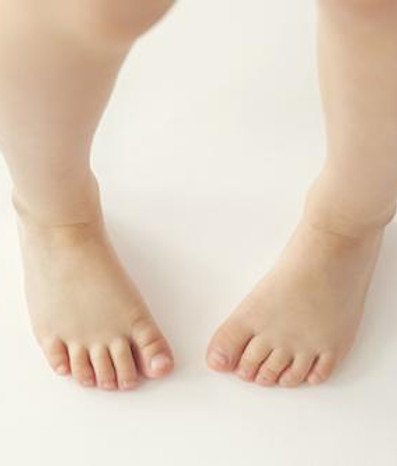
Intoeing/ outtoeing
Intoeing or pigeon-toed gait, occurs when a child walks with one or both feet turned inward. It is common in children under the age of 4 but if persistent can cause clumsiness and frequent tripping.
There are three main causes for intoeing. These are metatarsus adductus- where the foot itself is in a curved shaped position, internal tibial torsion- where the tibia (lower leg bone) is turned inward relative to the knee joint, and internal femoral torsion- where the femur (thigh bone) is turned inward relative to the hip joint.
Our podiatrists will assess your child's posture and biomechanics to determine the cause of the intoeing. Examples of treatment modalities include stretch/strengthen routines, addressing contributing factors such as tummy sleeping and "reverse W" sitting positions, and gait plates (orthotics that encourage the leg and foot to move in a better functional position).
Outtoeing or duck feet, is when a child walks with one or both feet turned excessively outward. It is often apparent with a laboured, apropolsive gait and accompanied by flat feet.
There are three main causes for outtoeing. These are external tibial torsion- where the tibia (lower leg bone) is turned excessively outward relative to the knee joint, external femoral torsion- the femur (thigh bone) is turned outward relative to the hip joint, and flat feet- as the midfoot collapses this forces the forefoot to turn out (abduct).
After a thorough assessment our podiatrists will determine the best treatment plan for your child. This can include gait plates (orthotics that encourage the leg and foot to move in a better functional position), stretching/strengthening, addressing foot posture issues.



